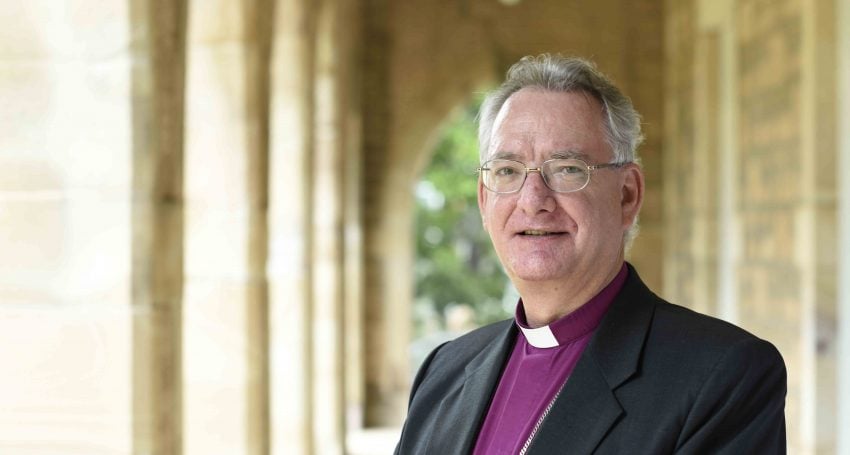Seeing is believing
Reflections
“Have you ever noticed how often in the gospels ‘seeing’ is such a key thing? Seeing is often associated with coming to faith or expressing faith. The healing of people who were blind often parallels the disciples finally understanding Jesus, faith finally dawning for them,” says Archbishop Phillip Aspinall

I recently ‘zoomed in’ on the Western Region Virtual Clergy Muster.
As we renewed our ordination vows, we reflected on the call of Matthew described in Matthew 9.9-13.
It’s very brief, only the skeleton of the narrative really. In very few words we learn that Jesus saw Matthew, that Matthew was a tax collector, that Jesus called him saying “Follow me” and that Matthew got up and followed.
We’re left to read between the lines a bit to fill in the gaps.
Advertisement
Evidently Jesus’ call exerted considerable influence on Matthew. There seems to have been power in it because he got up and followed. It’s reminiscent of the earlier calls to fishermen in chapter 4.18-22 who immediately leave their nets and follow Jesus. Matthew does the same thing here.
Notice the range of people Jesus calls. He calls not only relatively common people like fishermen. Here he calls a deeply despised person, a tax collector. Tax collectors were hated because they worked for the Roman authorities, in other words a foreign, occupying power. And their job was to extract money from the locals to give to that foreign power. That was bad enough, but the tax collectors extracted more than the Romans demanded and lined their own pockets with the extra. So the tax collectors were hated and ostracised as a result.
And this hated, ostracised, despised sinner Jesus calls.
The text says that “As Jesus was walking along, he saw…Matthew…”
Jesus saw him. Have you ever noticed how often in the gospels ‘seeing’ is such a key thing? Seeing is often associated with coming to faith or expressing faith. The healing of people who were blind often parallels with the disciples finally understanding Jesus, faith finally dawning for them.
And notice what happens in this passage. Jesus sees Matthew, but not as others had seen him. The Pharisees, and probably Jesus’ disciples too, saw Matthew as a despicable, miserable traitor of Israel to be spurned and shunned.
Advertisement
Not so Jesus. Jesus seems to see beneath his evident unattractiveness, his ambiguity, his vulnerability. Jesus seems to see him as a beloved child of God, who can be healed, restored, transformed, re-created. So Jesus says ‘Come’. No one had said that to Matthew for a very long time. ‘Come.’
In that single word ‘come’ Jesus is asking Matthew to be with him, to enter into relationship with him, to join a community with Jesus and his other companions.
It must have blown Matthew’s mind to be seen like that and spoken to like that. To have been on the receiving end of nothing but hate, derision, repulsion and then feel that divine love and acceptance had come to rest on him – on him of all people – must have been a profound shock. The embodiment of divine love says to him ‘Come’.
And the text records simply that “He got up and followed.”
Instantly he’s at dinner with Jesus and his disciples: sharing a meal, engaged in conversation, building trust, being renewed as never before, breaking down old barriers and divisions, discovering community, communion.
Matthew’s personal transformation, and the transformation of this ragtag community, stems from the mysterious power of genuine communion. It’s nothing less than the dawning of the actual reign of God through Jesus’ word and action.
Everyone around the table is empowered by being ‘seen’ as children of God, by being embraced by God’s transforming acceptance and love. Having been ‘seen’ in this way, they come to believe and follow.
Clergy are ordained to spread this good news, to implement this new community, to join in God’s transformation of the world. And lay people, the whole laos of God, are caught up in the same project.






